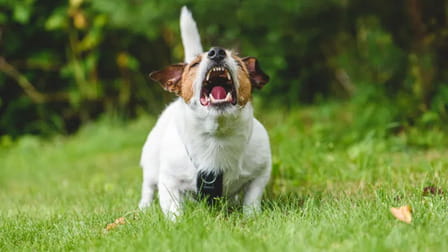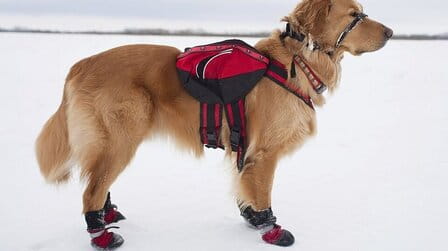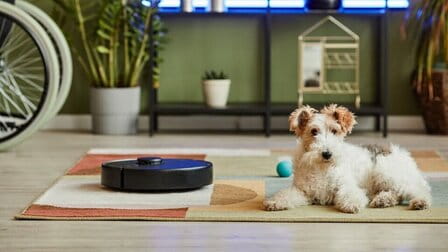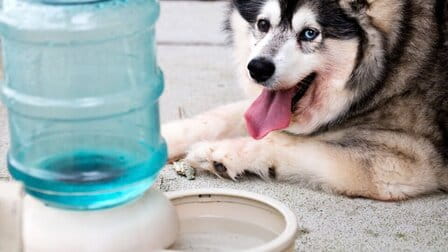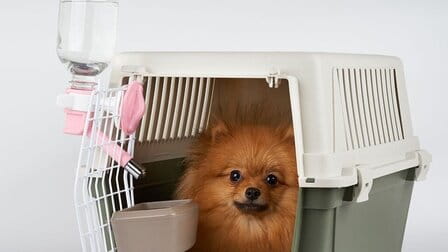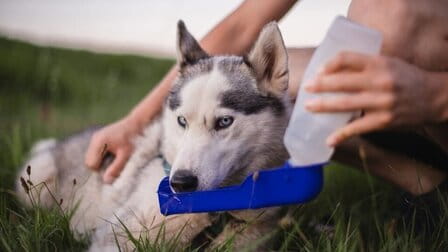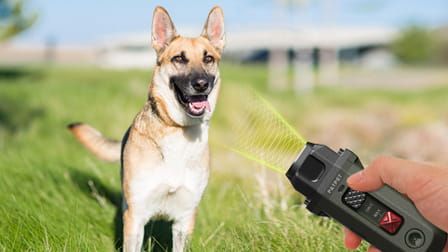You are looking for a dog crate size that is suitable for your dog and you want to protect it against the surrounding impacts. So how to choose dog crate size exactly?
The easiest way to make your new puppy feel at home is to use a safe and sturdy kennel. The right crate will not only create a safe place to store your pet when you can't be there, it will also awaken a dog's natural survival instincts.
Almost all dogs prefer a separate place for them and to be able to withdraw to the kennel at any time.
There are many types of cribs on the market such as soft, plastic and wooden crates, metal crates, large/small crates, collapsible/unfoldable, heavy (extremely portable), or even some that are portable. approved airline.
In addition, depending on the characteristics of the dog such as dogs that like to chew hard, a kennel with a soft side will not be suitable. Or the crate for traveling, heavy wooden crates will not be suitable for traveling. For information on how to choose crate dog size. Let's read the next section below.
1. Dimensions of the dog crate
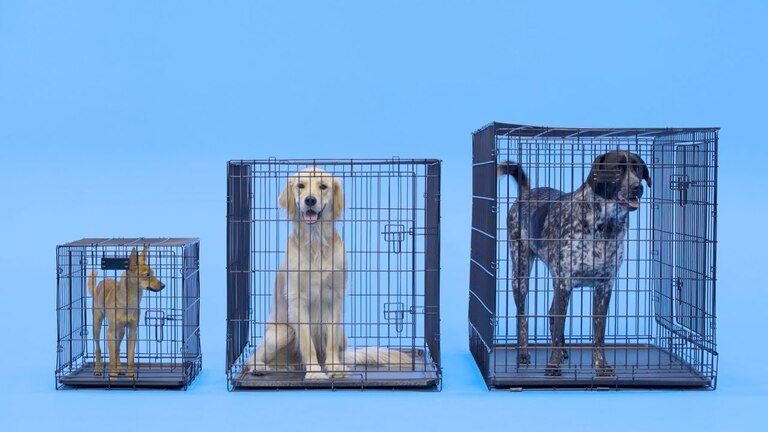
Three things you need to consider when choosing a dog size:
- Rule 1: Size is more important than weight
- Rule 2: The crate must be at least 6 inches (15 cm) longer than the dog's body length and 6 inches (15 cm) taller than the dog's shoulder height, this is for adequate comfort.
- Rule 3: Depending on the sex and ability of each species, your pet will need a large or small crate.
The crate dogs come in different sizes on the market, so you need to know which crate will be the right size for your dog.
Usually you need to determine based on the height and length of the dog because this will help the dog stand upright, not lower than the shoulder and lie flat on the back without being cramped.
At the same time, you can also invest in flexible dog kennels to save money by being able to adjust the size yourself as the puppy grows.
On the other hand, the weight and personality of the dog determine the size of the crate dog.
For example, Chihuahuas and Pomeranians weigh less than 30 pounds and are great for cages measuring 18 inches by 18 or 24 inches. Usually dogs that weigh up to 40 pounds should have a larger, 24 inch x 24 or 18 inch crate for dogs like Bulldogs and Dachshunds. Or dogs that weigh 40 to 60 pounds like Bulldogs and Pit Bulls will fit crates that are 30 inches to 24 to 36 inches long. Larger dogs like Boxers, Doberman Pinschers and Siberian Huskies, a large crate that ranges in size from 48 inches by 24 inches to 72 inches by 36 inches.
Size for dog crate basically:
- If the dog is under 25 lbs and 20 in (11kg and up to 50 cm) long -> the crate dog will be 18 to 22 inches (45 to 56 cm) long or extremely small.
- If the dog is under 30 lbs and 22 in (13.5 kg and up to 56 cm) long -> the crate dog is 24 inches (61 cm) long or small.
- If the dog is under 40 lbs and 28 in (18kb and up to 71 cm) long -> the crate dog is 30 inches (76 cm) long or medium.
- If the dog is under 70 lbs and 34 in (32 kg and up to 86 cm) long -> the crate dog is 36 inches (91 cm) or large.
- If the dog is under 90 lbs and 40 cm (41 kg and up to 102 cm) long -> the crate dog is 42 inches (107 cm) long or extra large
- If the dog weighs 90 to 150 pounds and is 46 to 68 inches (41-68 kg and 117-172 cm) long -> the crate dog is 48 to 72 inches (122-182 cm) long or extra large
2. Measure and weigh the dog

Some crate lengths like:
- 35-40 lbs -> 24-30 in
- 40-70 lbs -> 36 in
- 70-90 lbs -> 42 in
- 90 - 110 lbs -> 48 in
- 110 lbs -> 54 in
If you are using a crate for dog training, transport, or rooming, the type of kennel you choose should fit the dog.
When the crate dog is too small, it will make the dog uncomfortable. A crate that is too large makes the dog feel unsafe. Use a tape measure and measure the length of the dog when standing, should measure from the nose to the base of the tail to know its exact length. Regarding the dog's height, have your dog sit down and measure it, as some dogs are taller when sitting. You should also add 2 inches to 4 inches to both measurements to find the ideal crate height and length.
If you have a puppy, buy a crate that is suitable for an adult dog of that breed. Use dividers or boxes inside the crib to reduce the size.
3. Increase the size of the crate for small dogs

Usually the smallest dog crates will be about 24 inches long, while the slightly larger crates will be up to 30 inches long.
Each manufacturer offers different sizes of crib lengths and size types, so you can give or take a few inches with the length measurement of each size.
There are still a few kennels that are suitable for smaller breeds under 35 pounds to 40 pounds, like Jack Russell Terriers, Maltese, Poodles and French Mastiffs, among other small breeds. However, it will work well for puppies, if your dog is a puppy.
Especially if you're not sure about your dog's size, it's safer to increase the size a little. Except for the fact that you put a lot of items inside the crib.
4. Crate for medium, large dogs

Medium-sized crates are about 36 inches long and accommodate dogs that weigh 40 to 70 pounds. Full-sized adult Bulldogs, Cocker Spaniels and American Eskimos will fit in crates of this size.
Full-sized crates will be about 42 inches long and accommodate dogs weighing 70 to 90 pounds such as a Border Collie, Labrador retriever, or golden retriever.
5. Use metal crates for large breeds

While plastic crates or crates with soft sides are options for smaller breeds, a metal crate will be suitable for dogs weighing 90 pounds or more.
If the crate is not made of metal then it is prone to damage as large dogs are easily agitated. Most extra-large crates measure about 48 inches in length and are suitable for dogs weighing between 90 and 110 pounds such as Alaskan Bulldogs, German Shepherds, and Bloodhounds.
Also Jumbo kennels are about 54 inches long and should be very suitable for dogs weighing more than 110 pounds such as Great Danes, Saint Bernards and mastiffs.
6. Use an open crate as a play area for the dog

If you're looking for a crate for your dog to play in a secluded spot, feel free to choose any size that fits your space. Outdoor crates are a great option if you have a yard but don't want your dog to run out, while indoor crates are good for restricting dogs to a certain area of the house.
7. Types of dog crate
Soft-sided dog crate

It has surrounding partitions made of soft mesh or similar material. In addition, some soft cots also have a tubular steel frame to resemble a cage or cave structure, while some still serve as a backpack or a carrying case.
In addition, choosing a soft crate depends on how you want to use it, how often you use it and the breed of dog you have.
With an inexpensive price, light and easy to carry on planes and cars, especially foldable for easy storage, it is very popular in the market.
This type of kennel is not suitable for dogs with canines that enjoy gnawing, scratching, or are upset when confined. It is also very hard to clean.
Plastic dog crate

This is a plastic barrel with a soft earth contact between the barrels and is made of metal. It's not a pretty box, but it's pretty cheap.
Usually plastic crates are stiffer, sometimes all the holes in the crib, the ventilation system doesn't always provide enough air. Unlike the soft dog crate, the plastic crib is easy to clean and requires just one quick touch. The ability to last a long time and the thick plastic makes it quite difficult to break.
On the other hand, if space is inconvenient, you can stack them on top of each other, which is very convenient to store. Due to the thick plastic nature, it will make the dog feel warmer and can keep the responding dogs calm and quiet.
The advantage of this type is that it does not fold flat, so it is difficult to store.
Notably, it also has the feature of absorbing odors and is very easy to clean, moreover it is quite bulky and difficult to carry.
Metal or wire dog crates

Also known as the wide dog kennel, it is made of metal wire that is well ventilated and offers excellent visibility. This is also a good choice for puppies that like to chew a lot and are not suitable for larger breeds.
What we like about the product is its ruggedness, with 360-degree field of view so this is also not recommended for dogs with fangs or reaction and airflow, plus it's heavy and difficult to move. .
Metal kennels are easy to clean but are prone to rust if not properly protected, over time, a lot of dog hair and dirt can get trapped in the crossbars.
On the other hand, there are still some dog crates that have a lower tray setting that slides out for cleaning, so you can easily hear the dog's claws rubbing against the surface.
Wooden crates or decorative dog crate

These types will meet fashion and style trends, so they are very suitable for home decoration such as bedside cabinets or tables, because they are made of wood, they are very heavy, it is also very difficult to clean and are especially picky. dog to use. Because the wooden material which is not as easy to move and flexible as other crates.
Great for dogs that like to mess around with stuff and tend to be more expensive.
Multiple dog crates
The multi dog crate is a versatile combination from many different types of crates. However, it is underrated because it has to take on many features at the same time, but when it is very good, they are the most expensive because of the combination of many ingredients needed to produce.
For example, a combination of metal and plastic containers, adding wheels at the bottom for easier transport. Besides, it also has easy doors, but it is quite heavy and difficult to put together.
Conclusion
Through the above information that we provide, you must have found the best dog crate with the right size for your pet.
This benefits not only dogs but all their owners. Anyway, the most important aspect is finding the right size for your pet.

